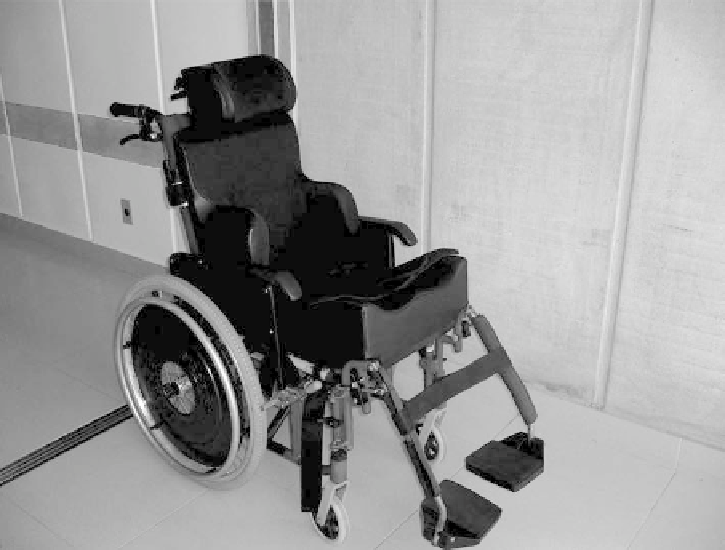Biomedical Engineering Reference
In-Depth Information
FIgUre 12.6
(See color insert.)
Pediatric wheelchair with anatomical seat and backrest.
Michael's alphabetization was supported by boards with symbols and letters, which
he selected by pointing with his thumb, a motion that he started to associate with this
function. As he learned to read, more sophisticated AT resources were introduced, such as
SKM software and activation switches for his left hand. Better control of the movements
of his left hand made it possible for Michael to use a keyboard enhanced with a template,
joystick, and switch for the mouse functions. Nevertheless, it is hard to safely transport a
computer to parks, clubs, or children's parties. So a talker was also incorporated to help
Michael communicate in these settings, allowing him to more fully partake of the social
situations they entail.
Michael continues to study in regular school without any difficulties mastering the
curriculum. He has a customized computer and printer in the classroom to help him
complete his school activities and a board attached to his chair-top desk with symbols and
letters as well as a switch, joystick, and talker. This permits Michael to communicate using
agreed-upon gestures, boards, computer writing, and a talker according to the setting and
how much his interlocutors know about the technological resources he uses. Figure 12.7
shows a talker developed by the SARAH Network that uses simple switches to scan letters
for forming words.
Michael was longitudinally followed-up by the pediatric specialists team.
In addition
to using AT, Michael's process of school inclusion was facilitated by favorable Brazilian
educational policies, although there are some moderate barriers existent in educational
services. Within this context, the aid and participation of the family, integration among
the educational and health-care professionals, and support in the classroom by a personal
assistant hired by Michael's parents were indispensible to his development and success in
school. This process is detailed in Table 12.1, in accordance with ICF.

